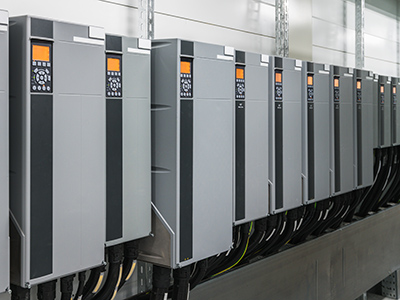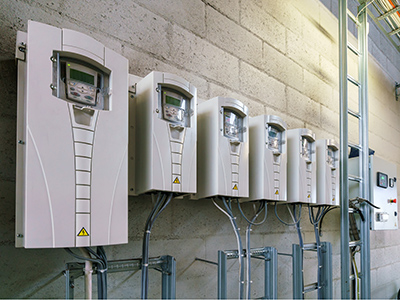Small Project Management
Why install a variable speed drive?
“Several contractors have suggested we install a VSD in our pump and fan motors, Why”.
What is a VSD or VFD?,
The acronym, VSD, is for Variable Speed Drive, and the acronym VFD stands for Variable Frequency Drive; for our purposes, in building management, they are essentially the same thing. The drive, which is connected to the pump or fan motor is electrically connected between the switchboard and the motor, typically with an electrical Isolator switch.
There are various brands with differing variations of technology and specifications, the important issue to inquire about is compliance to the Australian market and Australian standards.
What does a VSD actually do?
In a nut shell, is give you greater control of the electrical pump or fan motor, this greater control means you can slow down the rate at which it operates, including start up, which can have a direct effect upon energy usage; this is it’s greatest application in HVAC and buildings in general.
How does the VSD save energy for me?
if your pump motor or fan motor is D.O.L, the application of a VSD will save you money and typically pay for itself in 2 years subject to how much stop/ starting of the motor occurs in that time. D.O.L means “direct on line”, that is, the motor is directly connected to the electrical current at activation, thus, the motor will run to 100% very quickly. When the electric motor is activated in this fashion, there is an inrush of electrical current of circa 3 x “run current”. You are paying for this in your energy bill.
“run current” is the electrical current the motor need to operate at 100% post start up, this is also referred to F.L.A, or “full load current”.
For Example, 15 Kilowatt motor, 3 phase, 415 volts. F.L.A is approximately 28 amps, hence start up current is approximately 90amps. Although this is brief, our friends at the energy company see this value and will typically charge for it, they will also charge for the equipment to service this load. Implementing the Variable speed drives can reduce this, and should you implement variable speed drives across you entire site, you have a negotiation platform with the energy company to reduce their billing, but that is a whole other story.
There are some “cons”, these are of course cost, and in some instances it simply is not practical, for example, a fan motor that runs 24/7 at 100% 365 days a year. The frequency of start up and the necessity of specific control in such a fan motor is very low. <
Small, low power motors
A fan or pump motor that is not particularly powerful may not provide a “return on investment” in the relatively short time period a larger motor would. Different companies and consultants have differing opinions on this, typically we wouldn’t recommend a VSD on anything less than 11 Kilowatts, but again, it depends upon the application and the frequency of stop/starting of the motor.
More to Investigate
We’ve given you a very simple outline here, and it is essentially the core reason why most building management companies implement variable speed drives on behalf of their owner. There are more details to consider for you individual circumstances, which include power factor, the application of the motor, the size of the motor, the “return on investment” in your energy bills, and the return on investment from indirect advantages, from the implementation of the variable speed drive.
There is one important additional consideration, and that is measurement; we would recommend you have measurements of energy consumption, wherever possible, before and after the implementation of the drive for an extended period; this will demonstrate the viability of the installation of additional drives and a greater understanding of their energy consumption in you particular building environment.
Nigel Wraight
Principle
Forte Asset Services




Thanks very interesting blog!
Really very happy to say, your post is very interesting to read.I never stop myself to say something about it. You’re doing a great job. Keep it up.